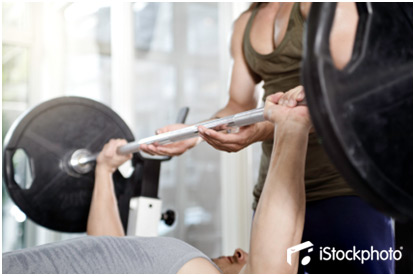
The bench press is one of the first exercises that most guys learn when they begin strength training and is hands down the most popular lift performed in most gyms. Have you ever been to the gym on a Monday and tried to get on the bench? Not happening.
The problem is: I rarely see it performed correctly.
The barbell bench press is done as an upper body lift, which targets the pectoralis muscles, but when it is performed correctly, becomes a whole body lift that teaches leg drive, total-body tension, and stabilizes the shoulder girdle. However, when performed incorrectly, it can cause serious muscle imbalances that lead to chronic shoulder pain. Needless to say this will hinder most daily activity.
In this article you will learn how to bench press with good technique to ensure safety and that you are getting the most possible benefit from this awesome lift. I will cover everything from the proper setup, to the complete execution, to various positions to suit your needs.
Bench Press With Proper Form: The Setup
Getting Under the Bar
As with any lift, proper starting position is imperative in performing the exercise correctly and the bench press is no different. When you lie on the bench, make sure your butt, upper back, and head are all in good contact with the pad. Line up your eyes with the bar and make sure your neck is positioned neutrally to prevent injury.
Foot Position
There are several ‘acceptable’ foot positions, all of which require your feet to be firmly planted on the floor. You are going to have to play around to see which works best for your anatomy, but here are the two that I teach the most.
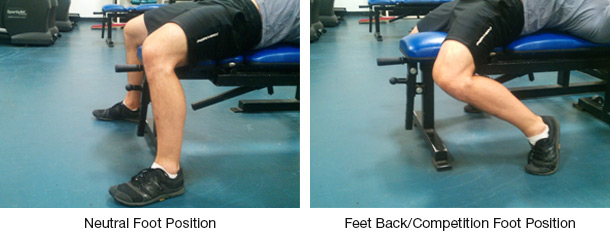
Under no circumstance should you keep your feet up in the air or on the bench as I often see. This causes you to not only prevent you from using leg drive, but you also lose most of your stability. These are both necessary to execute the lift properly and allow you to progressively lift more weight.
With some of my shorter clients or those who lack the hip mobility to keep their feet flat on the floor, I place a couple boards or plates under their feet, which affords them a stable surface to press off of.
Hand Position and Gripping the Bar
Just like foot position, your grip position is highly individual and depends on various factors such as your individual anatomy, injury history, shoulder/wrist mobility and goals.
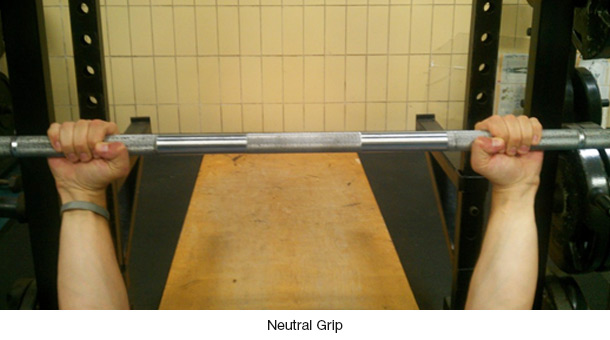
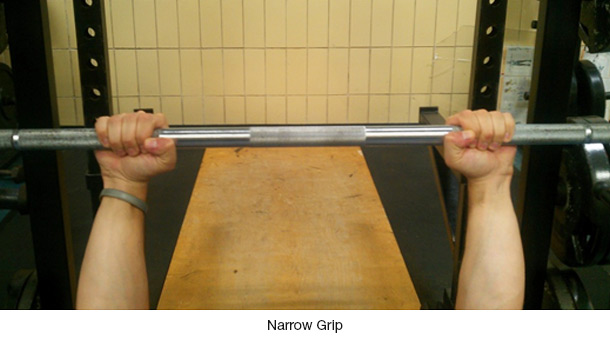
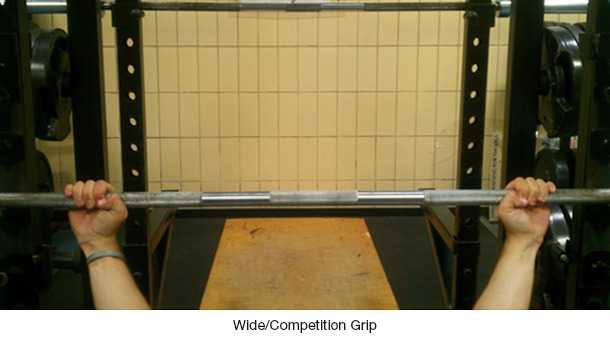
I recommend most people take a moderate or neutral bench grip for general fitness. The wider grip is generally used by powerlifters in competitions, but I find that for most people this grip chews up the shoulder a bit more.
Wherever you choose to grip the bar, you also want to make sure that your wrists are in a neutral position rather than hyperextended back, as this places great stress on your wrist. You can also lift more and produce more power by utilizing this positioning.
It is also very important to keep the bar as close and tight to the thumb/pad of your hand as possible. This will make it much easier to keep your wrist from hyperextending as well. The knuckles of your other 4 fingers should be behind the bar, not under it.

Get Tight!
This is perhaps one of the most important steps as it can make or break the entire lift. It is also the step that I see most people neglect. Getting tight and ready to press will help you prevent injury, stabilize your shoulders, and help you get more out of the lift. Here is what to do:
- Pull your shoulder blades together (and down if you tend to shrug). You can do this before you even grab the bar.
- Literally act as if you are trying to rip the bar apart. This will further activate your lats and back muscles.
- Engage your core, glutes and quads by squeezing these muscles. Remember, this is a full-body exercise!
It is a good idea to practice these steps with an empty bar until you get the hang of it. You will instantly add pounds to your bench if you haven’t been utilizing these techniques!
Unracking the Bar
It is always best to get a hand off as this will allow you to stay tight while unracking the bar, but if you don’t have a training partner or someone to help, there is a technique to doing this on your own.
To maintain tension you want to pull the bar off the rack using your back and lat muscles rather than pressing up and over the hooks. This allows you to keep your shoulders back and your shoulder blades tight together.
I’ve created this video to demonstrate the proper way to unrack the bar. The visual should make it easier to see exactly what technique you should use.
Most of the time when you have to ‘press’ the bar over the hooks, the shoulders also come forward, which makes it very hard to get back into position.
Bench Press With Proper Form: Ready to Bench
Proper Breathing
To remain stable throughout the press, it is important to utilize breathing to your advantage. Before you lower the bar, make sure that you take a big breath in and hold it. This can be done either before you unrack the bar or just after you unrack the bar before you begin to lower. This helps you create full-body tension as you bring the bar down to your chest.
There are also a couple of different ways to exhale and which one you use depends on your goals and experience. One way is to breathe out at the very top of each rep when the bar is stable, which allows you to take in another big breath before you lower the bar again. You can also slowly exhale through pursed lips as you press the bar up. If you are able and a little more advanced, I recommend holding your breath for several reps at a time.
Always remember to reset your breath at the top, never at the bottom of a rep!
Stay Tight and Pull the Bar to Your Chest
To stay tight through the whole movement you want to make sure that you continuously maintain activation of your lats, back muscles, abdominals, butt and quads. Keeping your abs, butt and quads tight is the easy part. Just squeeze them.
To maintain tightness on your lats and back, you want to visualize bending the bar apart and pulling it towards your chest. When you actively ‘bend’ the bar your elbows naturally stay in tight to the body, which is exactly what you want.
Do not let your elbows flare out to 90 degrees or perpendicular to your body. This is a quick way to shoulder impingement and bad shoulders. It also puts a great deal of stress right on the elbow joint. You want your elbows to remain tight at about a 45 degree angle. To control this, keep your lat muscles tight by squeezing under your armpits.
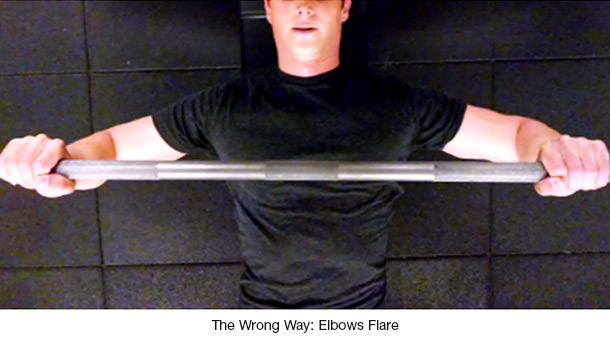
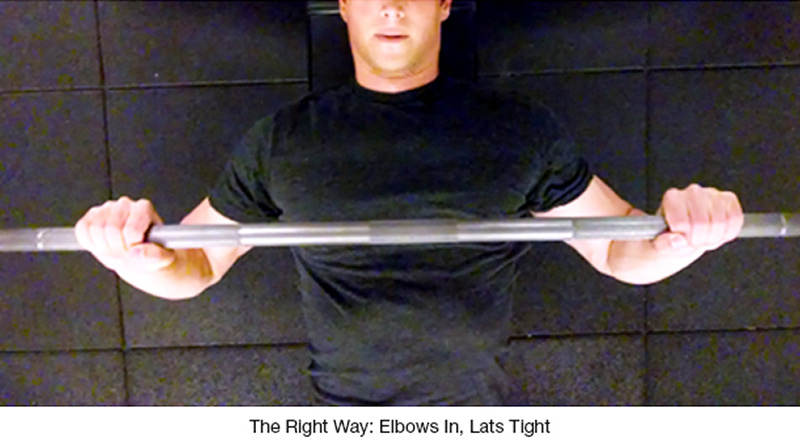
Always control the bar all the way down to your chest to ensure you are training proper mobility. Depending on your anatomy, the bar should end up somewhere between your sternum and your nipples. You want your forearms to be perpendicular to the ground at the bottom to allow for the best leverage when you begin to press.
Note: It is also very important to keep your head on the bench during the whole movement to protect your cervical spine. Often, those with poor shoulder mobility and weak neck muscles pop their head off the bench as they press. Avoid doing this and lower the weight to ensure proper form until you get it right.
Drive the Bar Up with Your Whole Body
Right before the bar touches your chest, start to drive back up using your whole body by transferring force through the ground. Just as you begin to push, dig your feet into the ground by pushing hard through your heels and driving your toes into the front of your shoe. You will instantly feel your quads, glutes and stomach tense up, providing you with more force as you press.
Keep pressing until you reach full lockout but remember to keep your shoulderblades tucked behind you and stop pressing before your shoulders come forward.
Eye Focus
You want to maintain eye focus at one point on the ceiling right above where you are pressing. Basically, you are watching where you want to push the bar to. This will allow you to stay focused and tight. Watching the bar as you press will throw off your stability because it is a moving object.
Now You’re Ready To Bench With Proper Form
I hope these technique tips not only help you push through some plateaus, but keep you injury free for many years down the road. Once you learn to press the right way, you can keep adding weight to the bar and set some new PRs!
Since everyone has different anatomy, there will be many variations in technique. Ask questions below and I will help you decide which is best for you!
Original article and pictures take www.builtlean.com site
Комментариев нет:
Отправить комментарий